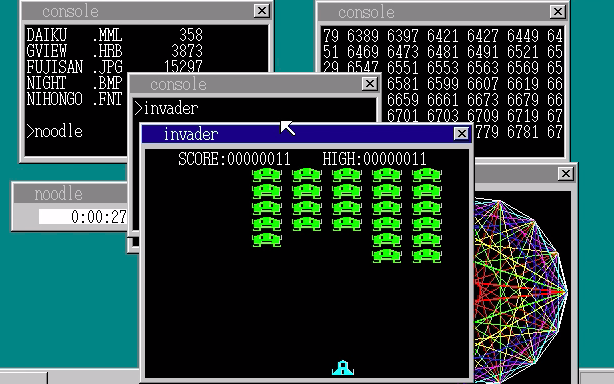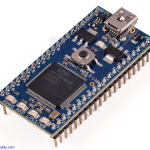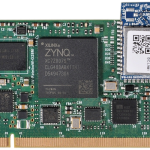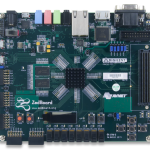The x86 emulator is a powerful tool that enables users to run legacy software on modern architectures, particularly beneficial for those navigating the realms of ARM architecture on Apple devices. Developers like Evan Martin have harnessed this technology to navigate the challenges posed by 32-bit software on AArch64 systems, introducing innovative solutions that maximize compatibility. Specifically, Apple’s Rosetta 64-bit emulation system showcases its prowess by allowing for the execution of 32-bit Windows executables, despite its primary focus on x64 binaries. This capability highlights the importance of understanding how Windows applications can seamlessly integrate within macOS environments, ensuring that users maintain access to their essential programs. As software continues to evolve, exploring the intricacies of x86 emulation becomes increasingly valuable for developers and users alike.
In the world of software compatibility, emulators play a pivotal role, particularly those capable of emulating x86 architecture. Such software solutions allow for the execution of older applications, streamlining the user experience across diverse computing environments. For instance, the intersection of 32-bit applications and contemporary ARM-based systems, such as Apple’s latest laptops, poses unique challenges that have recently been tackled by innovative techniques like Rosetta’s binary translation. This emulation framework not only simplifies the process of running Windows applications on macOS but also sheds light on alternative approaches like Wine, which provides enhanced compatibility for legacy software. As technologies intertwine, understanding these emulation methods helps users effectively bridge the gap between different computing platforms.
Understanding x86 Emulators and Their Role in Software Compatibility
An x86 emulator serves as a crucial bridge for users seeking to run applications originally designed for the x86 architecture on different platforms, particularly on ARM-based systems like Apple’s recent Mac lineup. With the growing popularity of ARM architecture due to its efficiency and performance benefits, emulation technologies that can accurately replicate x86 behavior have become increasingly vital. Such emulators ensure that users can continue to leverage legacy 32-bit software and 64-bit executables, allowing for a seamless transition in environments where hardware changes could disrupt workflow.
Evan Martin’s retrowin32 is a prominent example of an x86 emulator that effectively showcases how these technologies can adapt software compatibility to modern systems. His work embodies the painstaking effort required to enable older applications, often written for outdated architecture, to function correctly on contemporary hardware without extensive recoding. Understanding how emulators operate, particularly those that can leverage systems like the Rosetta binary translation within macOS, illuminates the critical role they play in maintaining software relevance in an ever-evolving tech landscape.
The Impact of Rosetta on Running 32-Bit Software
Rosetta, Apple’s sophisticated binary translation system, has transformed how Mac users interact with software developed for x86 architectures. Initially, Rosetta was designed to help transition users from Intel-based Macs to ARM-based systems by executing 64-bit x86-64 applications smoothly. However, what many users may not realize is that Rosetta also permits a compatibility mode that enables the execution of 32-bit software. This dual-function capability means that users can still access some older applications without needing to seek alternative solutions or undergo cumbersome debugging processes.
Evan Martin’s insights into leveraging Rosetta for running 32-bit Windows executables emphasize the importance of such emulation strategies. By crafting a 64-bit program that encapsulates the 32-bit executable, Martin navigated compatibility challenges imposed by modern architectures. His experience also underscores how other solutions, like Wine compatibility layers, effectively utilize similar techniques to run Windows applications on macOS and Linux systems. Together, these strategies present a comprehensive toolkit for software adaptability, allowing users to enjoy their legacy applications on cutting-edge hardware.
Navigating Between 32-Bit and 64-Bit Software
Transitioning between 32-bit and 64-bit software can be a complex affair, especially when considering memory management and operating system interaction. In typical operating systems, 64-bit processes have limited access to memory space allocated to 32-bit applications due to architecture differences. The innovative approach employed by Evan Martin illustrates how creating a 64-bit wrapper can effectively load and manage 32-bit code. This solution demonstrates a crucial capability of modern emulators to bridge the gap between old software and new hardware, mitigating compatibility issues that could hinder productivity.
Furthermore, the evolution of software architecture, accompanied by innovations in emulator technology, has facilitated this transition. As developers like Martin continue to explore and overcome barriers that separate x86 and ARM architectures, users can maintain access to vital 32-bit software without sacrificing performance. Such adaptability ensures that even as platforms evolve, user needs and legacy requirements are met, paving the way for a future where software is less constrained by the hardware it originally intended to operate on.
Exploring Wine Compatibility for Legacy Applications
Wine is a widely used compatibility layer that enables users to run Windows applications on platforms such as Linux and macOS without requiring a complete Windows installation. This technology serves as an important addition to the software ecosystem for users who still rely on legacy applications designed for x86 architecture. Unlike traditional emulators that replicate hardware, Wine translates Windows API calls directly into POSIX calls, allowing Windows executables to function in environments that would otherwise be incompatible.
Evan Martin’s comparison between the techniques used by Wine and Apple’s Game Porting Toolkit illustrates the ingenious methods employed to execute legacy software on modern systems. Both solutions resolve core compatibility issues, creating an effective environment for running 32-bit applications without requiring significant code modification. By studying these strategies, developers can glean invaluable insights into optimizing legacy applications for use in increasingly diverse computing environments, ultimately broadening their software’s usability across different architectures.
Future of x86 Emulation in a Changing Tech Landscape
As technology continues to evolve, the future of x86 emulation hangs in the balance between legacy support and the rising dominance of ARM architecture. With Apple already integrating ARM-based chips into their hardware, the reliance on x86 emulators could grow as users seek solutions for software that is not readily available in native versions. This shift presents both a challenge and an opportunity for developers to innovate new emulation tactics that can enhance performance and increase compatibility for a broader range of applications.
Moreover, the potential phasing out of systems like Rosetta raises questions about long-term support for emulation technologies. Developers like Evan Martin provide critical insights into the possibilities that exist within x86 emulation, suggesting that even as the industry pivots toward newer architectures, thoughtful consideration of legacy usability must remain a priority. Ensuring that legacy applications continue to function effectively lays the groundwork for an adaptable technological ecosystem that can accommodate advancements while respecting user needs.
Memory Management Between 32-Bit and 64-Bit Code
A significant challenge when executing 32-bit code on a 64-bit processor lies in efficient memory management. The way memory is allocated and accessed varies notably between architectures, necessitating careful orchestration to ensure seamless operation. For instance, when using an x86 emulator or Rosetta’s compatibility mode, developers must create strategies to manage memory allocation between these different environments, which often involves clever programming alternatives and a detailed understanding of both the 32-bit and 64-bit memory models.
In his explorations, Evan Martin highlights the intricacies involved in loading a 32-bit executable through a 64-bit wrapper. This process entails a detailed mapping of memory locations to ensure that the 32-bit application can interact smoothly with the system’s resources, avoiding pitfalls that could lead to crashes or performance degradation. The intersection of old and new architectural paradigms demonstrates the need for a robust approach to memory management, which will be increasingly critical as more users transition to ARM-based devices while still needing access to legacy software.
Adapting Legacy Software for Modern Systems
Adapting legacy software for modern systems is no small feat, especially with the increasing shift toward ARM architectures. As many applications were initially built for x86 environments, developers face a significant challenge in re-engineering older software to function optimally on new hardware. This often involves emulators that can faithfully replicate the behavior of the original working environment, allowing users to run vital programs without modification.
Evan Martin’s work with retrowin32 contributes valuable knowledge to this adaptation process. By utilizing existing emulation frameworks and creatively addressing compatibility issues, he exemplifies how developers can successfully transition legacy applications to ARM-based platforms. This effort not only highlights the ongoing relevance of older software but also showcases the potential for innovative solutions to extend the lifespans of essential programs in an ever-evolving technological landscape.
Challenges of Compatibility in Software Emulation
The quest for compatibility in software emulation is fraught with challenges, particularly as systems evolve from x86 to ARM architectures. When dealing with emulators, developers often contend with nuances related to processor instructions, memory management, and even user interface components that behave differently across various platforms. Evan Martin’s explorations underscore the importance of addressing these compatibility issues head-on to create functional emulators capable of meeting user needs.
Furthermore, as the computing landscape shifts, the potential for losing support from legacy systems becomes a pressing concern. This challenge is particularly evident with Apple’s ongoing evolution of its hardware ecosystems; the methods that work today may be rendered obsolete by future updates or changes in the operating environment. Developers must remain vigilant and adaptable, finding new strategies for ensuring legacy software continues to function effectively amid technological advancements.
Leveraging Efficient X64 Mode for Legacy Code
One of the key insights gained from Evan Martin’s work is how to effectively leverage the x64 compatibility mode offered by modern processors to run legacy 32-bit code. Through careful design of the 64-bit wrapper that interfaces with the 32-bit executable, developers can perform tasks such as handling system calls and memory management, ensuring that both sets of instructions can coexist; this is essential for maintaining software usability across disparate architectures.
The x64 compatibility mode encapsulates the potential for extending the lifespan of many legacy applications, providing users with continued access to necessary software without significant rewrites. By understanding the intricacies of how these modes function, developers can innovate further ways to build software that adapts to new hardware while retaining features essential to the original user experience. This highlights the importance of emulation techniques in preserving software usability in a time of rapid technological change.
Frequently Asked Questions
What is an x86 emulator and how does it relate to ARM architecture?
An x86 emulator is software that mimics the x86 architecture, allowing programs built for this architecture to run on different CPU architectures, such as ARM. With Apple’s shift to ARM architecture in their Macs, developers use x86 emulators like Rosetta to enable compatibility with 64-bit x86 software, which includes sophisticated ways to handle 32-bit software as well.
How does Rosetta work as an x86 emulator on ARM64 architecture?
Rosetta is Apple’s high-performance x86 emulator that translates x86-64 binaries to run on ARM64 architecture. It uses binary translation to execute Windows executables and other 64-bit applications designed for x86 architecture, making the transition to ARM-based Macs smoother for users.
Can I run 32-bit x86 software on an ARM-based Mac using an x86 emulator?
Yes, you can run 32-bit x86 software on an ARM-based Mac by using an x86 emulator that supports a compatibility mode. Apple’s Rosetta can handle 32-bit executables through this mode, though it primarily focuses on 64-bit x86-64 binaries. Developers often create 64-bit wrappers to load and execute these 32-bit applications.
What principles does the x86 emulator use to maintain Wine compatibility?
An x86 emulator maintains Wine compatibility by employing similar techniques for translating and executing Windows executables designed for x86 architecture. This involves mapping the system calls and managing memory between 32-bit and 64-bit environments, allowing for seamless operation of x86 applications on non-x86 platforms.
Is the use of x86 emulators like Rosetta a permanent solution for running legacy software?
The use of x86 emulators like Rosetta may not be permanent, particularly if Apple decides to modify or discontinue support for x86-64 emulation in the future. Developers should be aware that while these emulators are effective now, transitions in technology may prompt the need for alternative solutions.
What clever tricks can I learn from Evan Martin’s use of an x86 emulator for 32-bit software?
From Evan Martin’s exploration of running 32-bit software on an ARM architecture using an x86 emulator, you can learn tricks related to creating 64-bit wrappers for 32-bit executables, handling memory management effectively, and ensuring proper interaction with the operating system—all key for successful cross-platform compatibility.
| Key Point | Details |
|---|---|
| Developer | Evan Martin is the developer of retrowin32, an x86 emulator. |
| Platform | It is designed to run on a Mac or on the web. |
| ARM Compatibility | Evan is exploring how to run 32-bit x86 binaries on AArch64 architecture. |
| Rosetta System | Apple’s ARM-based Macs utilize a high-quality x86 emulator through Rosetta, supporting x64 binaries. |
| 32-bit Emulation | Rosetta’s compatibility mode allows running 32-bit Windows executables effectively. |
| Creating a Wrapper | A 64-bit program is needed to load and execute the 32-bit binaries. |
| Memory Management | Requires adjustments to manage memory between 32-bit and 64-bit code. |
| Future of Emulation | There are concerns about the longevity of Rosetta’s support for x86-64. |
| Game Porting Toolkit | Apple’s toolkit employs techniques similar to those used by Wine. |
Summary
The x86 emulator developed by Evan Martin offers innovative solutions for running older 32-bit applications on modern ARM-based Macs through careful usage of the Rosetta translation system. While effective, reliance on this technique underscores the importance of adapting to technological advancements and shifts in compatibility. As users transition between platforms, this approach may provide insightful strategies for maximizing software usability.






